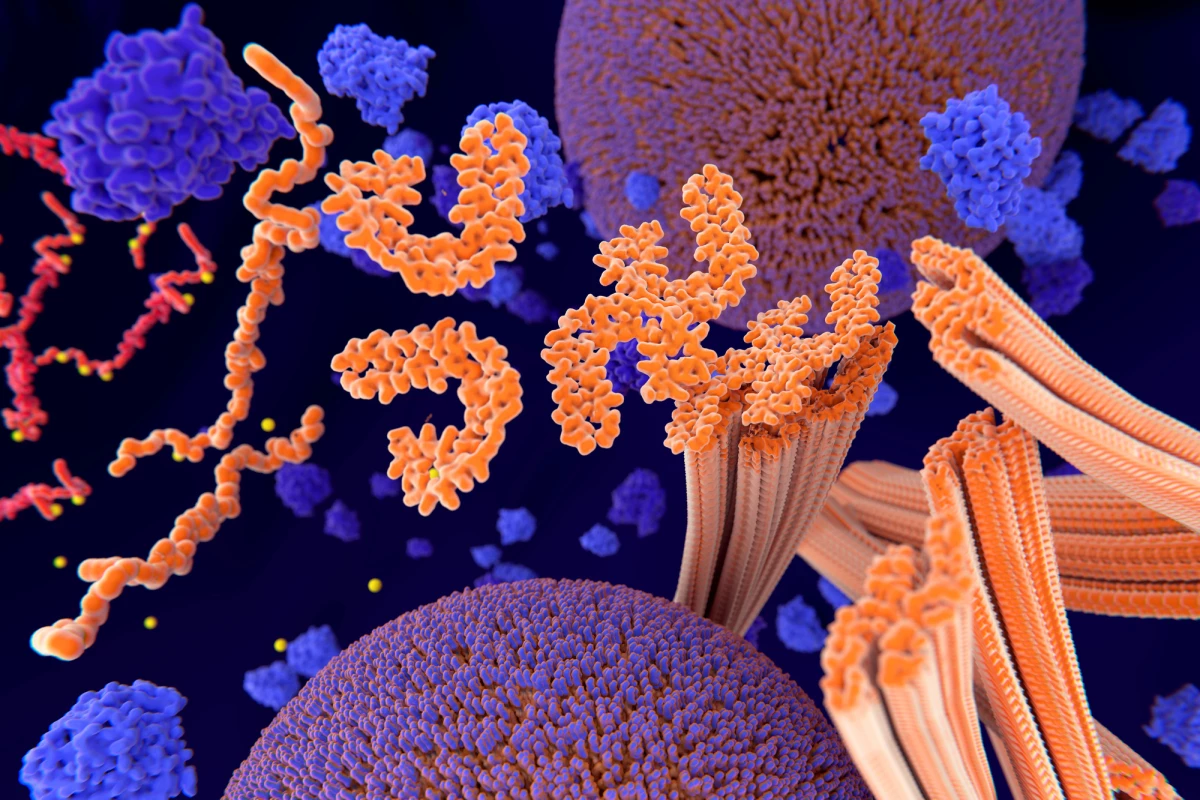Researchers have found that when used on monkeys, an experimental drug slowed the process that leads the tau protein to aggregate into neuron-damaging tangles commonly seen in Alzheimer’s disease and improved the animals’ cognitive functioning. The next step is to develop a drug that can be used in humans.
Much of the research into treatments for Alzheimer’s disease (AD) is focused on the removal of built-up amyloid beta or tau, but by the time these harmful proteins have accumulated, they’ve likely already caused damage to neurons.
Better, then, to find ways of preventing the build-up before it happens. That’s what researchers at the Yale School of Medicine have done, teaming up with Johns Hopkins University to identify an experimental drug that slows the phosphorylation of tau, a process that leads to its aggregation and subsequent neuronal damage in AD.
In healthy brains, tau regulates the assembly and maintenance of the structural stability of microtubules, which provide a structural backbone for neuronal components. In AD, however, tau exhibits increased phosphorylation – where phosphate groups are added to the tau peptide – which causes the tau to aggregate into neurofibrillary tangles, a key pathological feature of the condition. Research suggests that inflammation in the aging brain contributes to tau phosphorylation in the common, late-onset form of AD, otherwise known as sporadic AD.
“We were able to reduce the phosphorylation by restoring regulatory actions that are lost with age and inflammation,” said Amy Arnsten, corresponding author of the study. “The mechanism of protection is different from other approaches undertaken so far.”
The researchers focused their attention on the brain enzyme glutamate carboxypeptidase II (GCPII). Not only is GCPII expression increased by inflammation, but it erodes the protective effects provided by the metabotropic glutamate receptor 3 (mGluR3), a receptor on neurons that facilitates higher cognitive functions.
They tested a GPCII inhibitor called 2-MPPA, synthesized by the Johns Hopkins Drug Discovery program, on aged rhesus macaque monkeys with naturally occurring GCPII and tau pathology, administering the drug daily for six months. The researchers found that 2-MPPA reduced tau hyperphosphorylation, the monkeys treated with the drug showed cognitive improvement and had no apparent side effects.
The researchers say their findings suggest that GCPII inhibition may be particularly helpful in reducing the risk of sporadic AD caused by inflammation. The next step is to develop a drug that can be used in humans.
“We hope to develop a GCPII inhibitor that can be taken orally and is safe for human use,” said Barbara Slusher, one of the study’s co-authors. “We believe this mechanism has great potential.”
The study was published in the journal Alzheimer’s & Dementia Translational Research & Clinical Interventions.
Source: Yale School of Medicine





